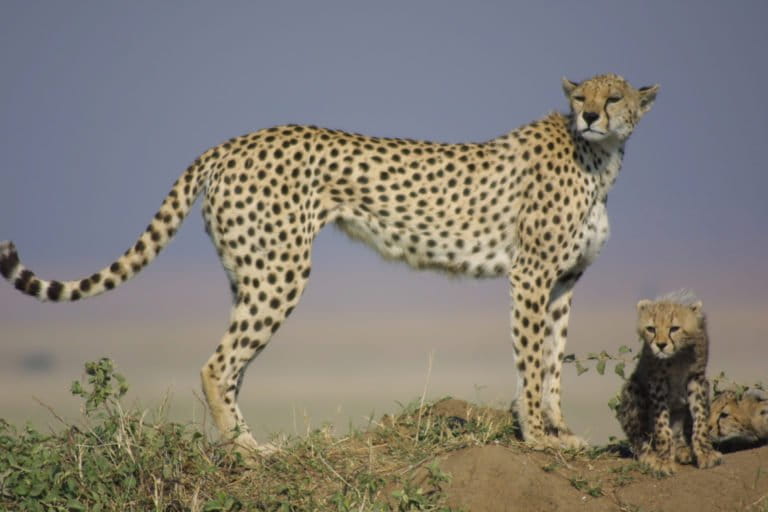- Big cats is the theme of the global celebration of this year’s World Wildlife Day on March 3.
- A big cats film festival hosted by CITES and Jackson Hole Wildlife Film Festival at the UN headquarters in New York City will screen 16 films selected as finalists.
- Big cats are key apex predators that keep ecosystems healthy, and eight species are being celebrated for the event: the clouded leopard, jaguar, cheetah, leopard, lion, snow leopard, tiger and puma.
Big cats around the world face many challenges, from diminishing prey populations and habitat degradation, to poaching for their meat and body parts. A current spike in the killing of Bolivia’s jaguars for the illegal trade in their teeth for jewelry is perhaps the most recent and egregious example of the latter.
But there are notable efforts to raise awareness and galvanize support for these important apex predators led by some governments and NGOs like the International Union for the Conservation of Nature (IUCN), Panthera, National Geographic Society’s Big Cats Initiative, and many others.

Now added to this list is an upcoming event for World Wildlife Day on March 3. A key celebration of this global event will be the International Big Cats Film Festival, on March 2 and 3, jointly presented by Jackson Hole Wildlife Film Festival and CITES, the Convention on International Trade in Endangered Species of Wild Fauna and Flora. The festival will be hosted at the United Nations headquarters in New York City and the Explorers Club, as well as many other places around the world.
“When it comes to big cats, there is an urgent need for action, now,” Lisa Samford, executive director of Jackson Hole WILD, told Mongabay by email. “The International Big Cats Film Festival creates a bank of programming for free local events that raise awareness on a global scale to empower local stakeholders and cat conservation advocates as they address local issues. By working together, people around the world can impact public policy decisions governing wildlife trade, thereby really making a difference.”
The event and related programming focuses on eight particular species: the clouded leopard, jaguar, cheetah, leopard, lion, snow leopard, tiger and puma.

“These eight cats were chosen by CITES to underscore the systemic importance of these apex predators,” Samford said. “By saving these species and the habitats they range, we simultaneously impact the entire ecosystem of species that share their territories.”
“Over the past century we have been losing big cats, the planet’s most majestic predators, at an alarming rate,” CITES secretary-general John Scanlon told Mongabay by email. “Big cats is not only the theme of this international film festival we’re co-organizing with Jackson Hole Wildlife Film Festival, but more importantly the theme of this year’s UN World Wildlife Day.
“World Wildlife Day 2018 gives us the opportunity to raise awareness about their plight and to galvanize support for the many global and national actions that are underway to save these iconic species,” Scanlon added. “Through World Wildlife Day, the most important global annual event dedicated to wildlife, we will generate the level of attention big cats deserve to be sure they are with us for generations to come.
“All species of wild cats, including big cat species, are protected under CITES through the regulation of international trade,” Scanlon said. “For nearly 20 years, CITES has highlighted the role of organized criminal activity in the illicit trafficking in Asian big cats, which have always been high on the CITES agenda, and over the last seven years we have seen our efforts to combat transnational organized wildlife crime at global level and on the front lines significantly enhanced.”

In an effort to reach as wide an audience as possible, the expanded definition of big cats is being used for World Wildlife Day, which includes not only lions, tigers, leopards and jaguars — the four largest wild cats that can roar — but also cheetahs, snow leopards, pumas and clouded leopards. Big cat species are found in Africa, Asia, and North, Central and South America, representing a virtually global distribution.
Event organizers have released a list of the 16 finalists for the film festival; these will all be screened at the event and the winners announced.
Readers who are not in the New York area or are outside the United States are invited to get involved by hosting a screening of the films in their own communities at a later date. Learn more about that here. Learn more about World Wildlife Day here.
